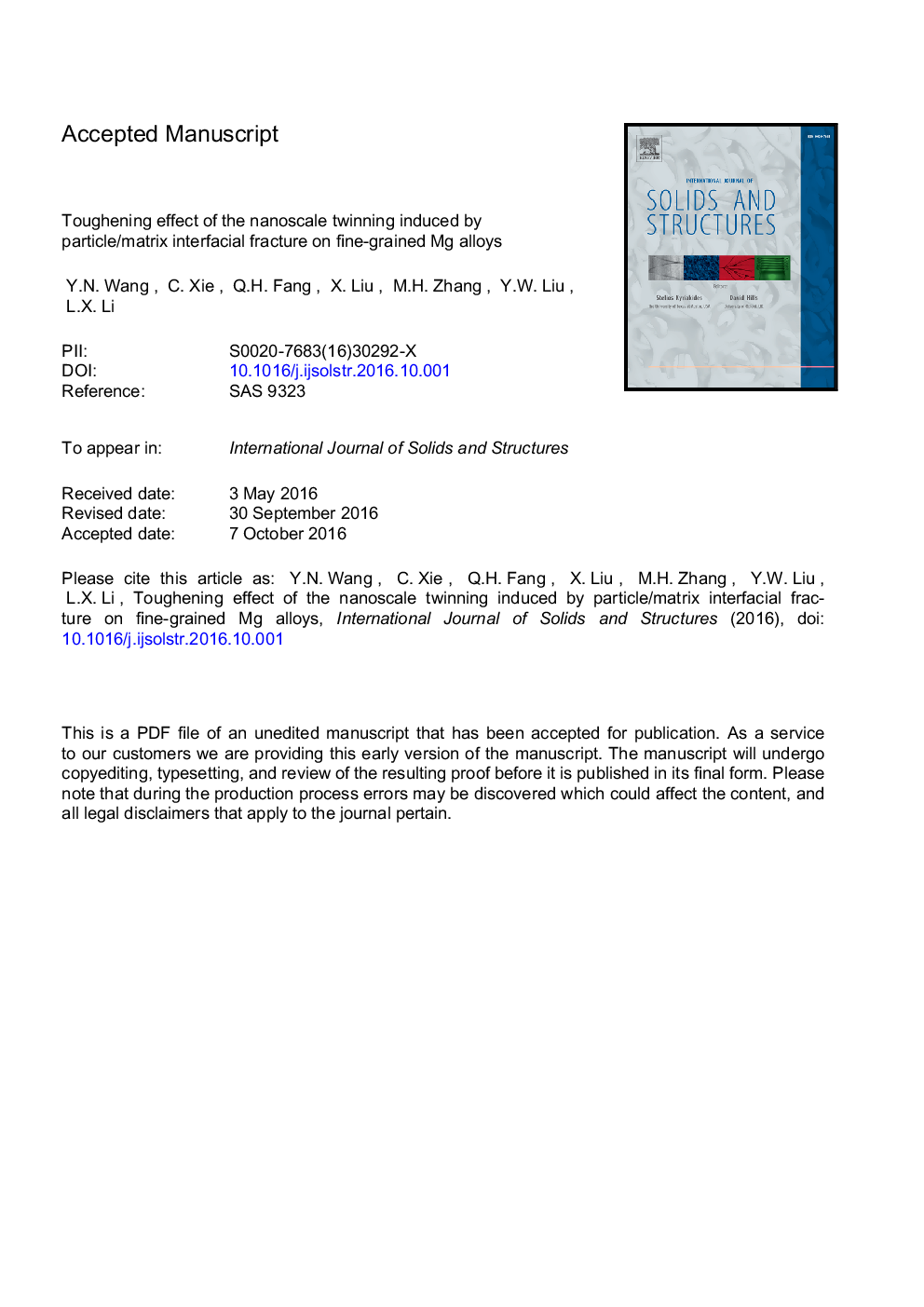| Article ID | Journal | Published Year | Pages | File Type |
|---|---|---|---|---|
| 4922668 | International Journal of Solids and Structures | 2016 | 24 Pages |
Abstract
This study theoretically analyzes the toughening effect of the nanoscale twinning induced by the high stress concentration at the particle/matrix interfacial crack tip on fine-grained magnesium (Mg) alloys. The nanoscale twinning within the interfacial crack-tip plastic zone is modeled by a wedge disclination quadrupole. The closed form expressions of the stress intensity factors (SIFs) and the energy release rate (ERR) for the arc-shaped interfacial crack are achieved applying the complex potential method for plane elasticity and conformal mapping. The impacts of twin dimensions, the shear modulus ratio of the particle to Mg matrix, the particle radius and spacing, twinning orientations, as well as the relative orientation between the twin and the crack on the toughening effect are discussed and presented as follows: (1) the nanoscale twin lath with a larger thickness-length ratio is an energetic energy dissipating mechanism for ductile fracture in fine-grained Mg alloys, which favors the fracture toughness enhancement; (2) the interface can be gradually weakened with increasing shear modulus of the particle; (3) under the toughening effect of nanoscale twinning, the interfacial fracture toughness is strongly dictated by the particle size and spacing. Specifically, the optimum particle radius and spacing that can strengthen the interface exist; and (4) the toughening effect is also dependent on the relative orientation and the twinning orientation. Based on the interaction among microstructures, this study essentially and quantitatively mends the classical fracture toughness models for particle reinforced metal matrix materials.
Related Topics
Physical Sciences and Engineering
Engineering
Civil and Structural Engineering
Authors
Wang Y.N., Xie C., Fang Q.H., Liu X., Zhang M.H., Liu Y.W., Li L.X.,
